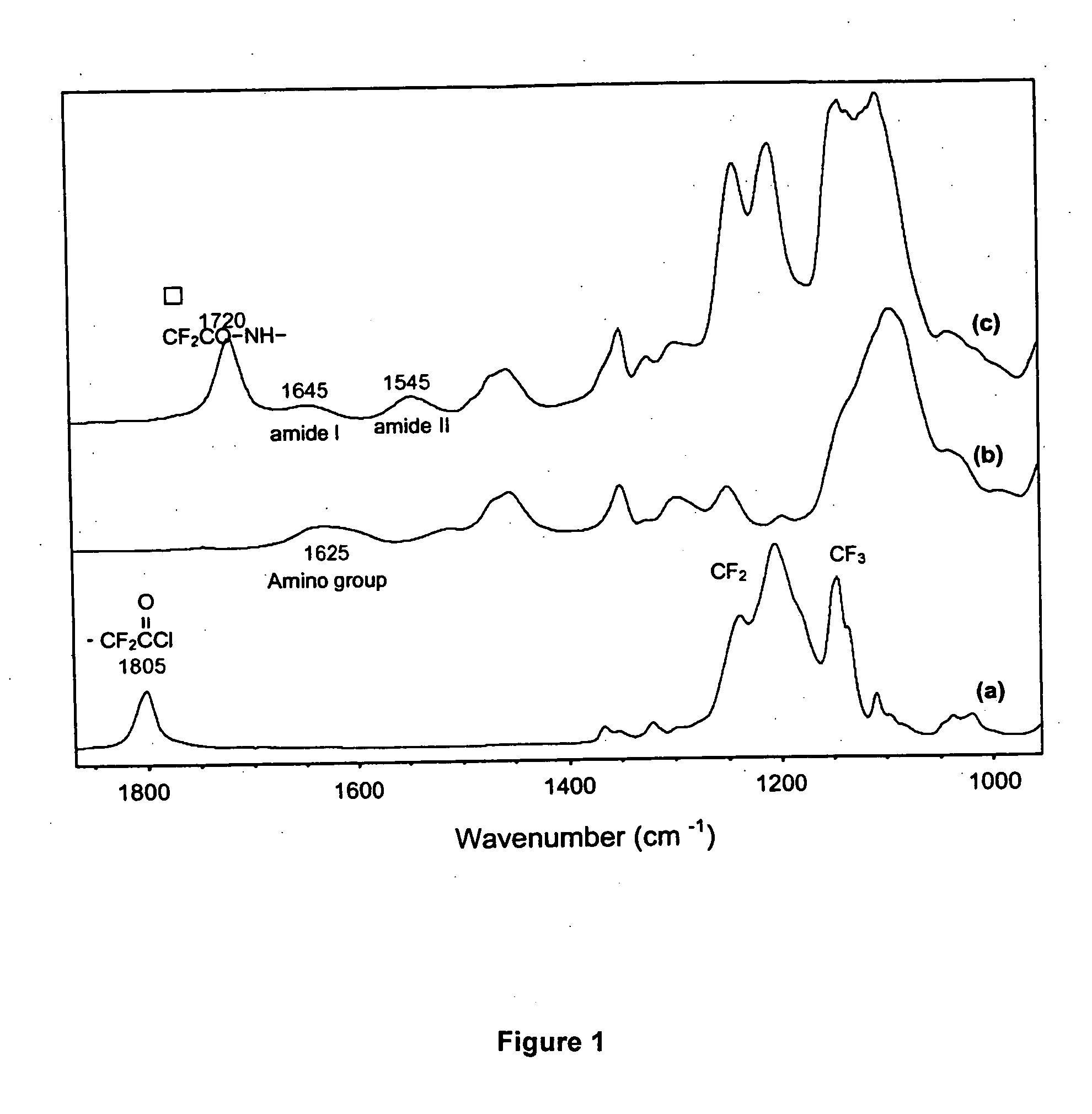Perfluorocarbon-soluble compounds
- Summary
- Abstract
- Description
- Claims
- Application Information
AI Technical Summary
Benefits of technology
Problems solved by technology
Method used
Image
Examples
examples
Materials
[0060] Methoxy-polyethylene glycols (MPEG) with molecular weight of 350, 550 and 750 were obtained from Union Carbide (Danbury, Conn.), perfluorooctanoic acid (C7F15COOH), perfluorododecanoic acid (C11F23COOH) and perfluorotetradecanoic acid (C13F27COOH) were from Aldrich (Milwaukee, Wis.), perfluoroctyl bromide (PFOB) from Chem-surf (Sebastopol, Calif. ) and polyfluoropolyether Galden®ZT85 from Solvay Solexis, Inc. (Thorofare, N.J.). Perfluoroheptanoic acid (C6F13COOH, 97.6%), perfluorooctanoic acid (C7F15COOH, 98%) and perfluoronanoic acid (C8F17COOH, 98%) were obtained from P & M Company (Russia). Dodecylamine (C12H25—NH2, 98%) and octylamine (C8H17—NH2, 98%) were purchased from Fluka (USA). CF-76 was received from 3M (USA). Other chemicals if not specified were purchased from Sigma or Aldrich. All of these materials were used as received without further purification.
example i
Synthesis of Perfluoroacid Chloride
Step (1) of the Scheme I and Scheme II
[0061] One mole ratio of a perfluorocarbonic acid (C6F13COOH, C7F15COOH, C8F17COOH, C11F23COOH or C13F27COOH) was first dissolved in 100 ml of dry benzene under a nitrogen atmosphere. Then, 2 mole ratio of thionyl chloride (SOCl2) and 0.5 mole ratio of pyridine were added. The mixture was placed in a 250 ml 3-necked round bottom flask equipped with a reflux condenser, a drying tube, a stirring bar and a N2-inlet. The reaction commenced immediately with an appearance of fumes due to the evolution of HC1. The contents were continuously refluxed for 6 hours at 60° C. The traces of excess of thionyl chloride and reaction solvent were evaporated in vacuum at 80° C. The residue was used directly in the subsequent amidation with amino-MPEG (Example 3), dodecylamine (C12H25—NH2) or octylamine (C8H17—NH2) (Example 9).
example 2
Calculation of HFB Values of Fluorosurfactants
[0062] The HFB values of PEG-based fluorosurfactants were calculated using the following formula:
HFB=(mol % hydrophilic group) / 5.
[0063] A series of perfluoroalkylated MPEG surfactants, listed in Table I, were thereby synthesized to examine their potency of making PFC microemulsion and their HFB values were calculated.
TABLE 1Chemical formula of synthesized RF-MPEG fluorosurfactantswith calculated HFB valuesStructure of fluorosurfactantHFBC7F15CONH-PEG350-OCH38.8C7F15CONH-PEG550-OCH311.2C7F15CONH-PEG750-OCH312.7C11F23CONH-PEG350-OCH37.3C11F23CONH-PEG550-OCH39.4C13F27CONH-PEG350-OCH36.7C13F27CONH-PEG750-OCH310.2
PUM
| Property | Measurement | Unit |
|---|---|---|
| Temperature | aaaaa | aaaaa |
| Temperature | aaaaa | aaaaa |
| Temperature | aaaaa | aaaaa |
Abstract
Description
Claims
Application Information
 Login to View More
Login to View More - R&D
- Intellectual Property
- Life Sciences
- Materials
- Tech Scout
- Unparalleled Data Quality
- Higher Quality Content
- 60% Fewer Hallucinations
Browse by: Latest US Patents, China's latest patents, Technical Efficacy Thesaurus, Application Domain, Technology Topic, Popular Technical Reports.
© 2025 PatSnap. All rights reserved.Legal|Privacy policy|Modern Slavery Act Transparency Statement|Sitemap|About US| Contact US: help@patsnap.com



